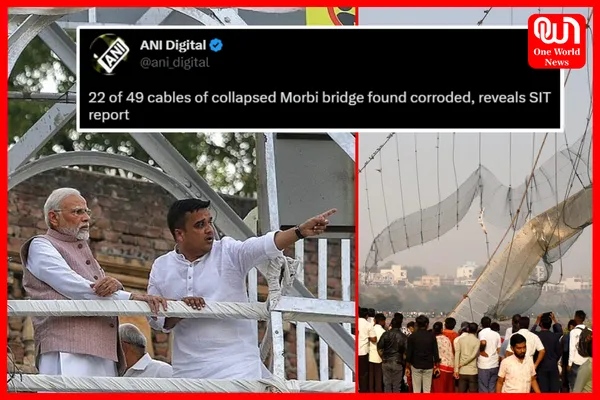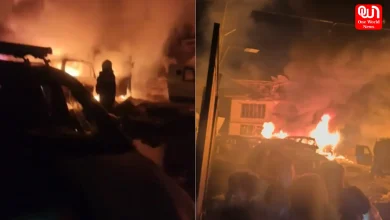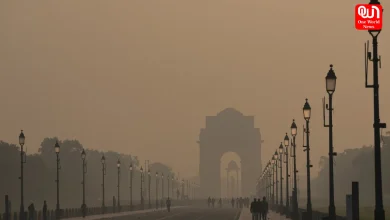Morbi Bridge Collapse: Corroded wires, other lapses found in SIT report

Morbi Bridge Collapse: Rusted cables and half of the wires “already damaged” before the incident
The Gujarat government has appointed the Special Investigation Team (SIT) to investigate last year’s Morbi bridge collapse that killed 135 people. The SIT has found that nearly half of the bridge’s wires were corroded, and the faulty welding of old suspenders with new ones were some of the significant lapses that led to the collapse.
“It was observed that out of the 49 wires (of that cable), 22 were corrupted, which indicates that those wires may have already broken before the incident. The remaining 27 wires recently broke,” the SIT said.
22 of 49 cables of collapsed Morbi bridge found corroded, reveals SIT report
Read @ANI Story | https://t.co/5A1QJpggJy#MorbiBridgeCollapse #Gujarat #Morbi pic.twitter.com/AI9IZZLXt5
— ANI Digital (@ani_digital) February 20, 2023
The SIT’s “Preliminary Report on Morbi Bridge Incident” was delivered in December 2022. The Morbi municipality received it more recently from the state’s urban development agency. The SIT comprises IAS officer Rajkumar Beniwal, IPS officer Subhash Trivedi, Secretary and Chief Engineer from the state department of roads and buildings, and a structural engineering professor.
The SIT has discovered significant flaws in the Oreva Group’s repairs. Even before the cable broke on October 30 in the evening, one line was rusted, and about half of its wires were already damaged. It also revealed that the main cable on the river’s upstream bank broke, causing the tragedy. Seven steel wires in each of the seven strands made up each cable. According to the SIT report, 49 wires were bundled into seven strands to create this cable.
Also, it was discovered that when renovating, the new suspenders were welded to the old suspenders (steel rods connecting the cable with the platform deck). As a result, the suspenders’ behaviour changed. Single-rod suspenders should be used to support the load in these bridges.
Over 300 people were on the bridge at its collapse, which the SIT claims was “far more” than the load the bridge could support. Nonetheless, laboratory results will confirm the bridge’s actual carrying capacity.
Read more- SC to hear PIL against Adani Group as it goes for audit
A critical factor that caused the bridge to collapse
The investigation report also noted that adding an aluminium deck instead of individual wooden planks led to the collapse.
“Walking structure was made of rigid aluminium panels instead of flexible wooden planks. If there were individual wooden planks (which were there before renovation), the number of casualties could have been lower. Moreover, no load test or structure test was conducted before opening the bridge,” SIT said.
According to the SIT, the deck is less flexible and less likely to deform in its plane since the aluminium honeycomb panels were fixed together tightly with no space between them. The usage of aluminium also increased the bridge’s overall weight.
Liked this post?
Register at One World News to never miss out on videos, celeb interviews, and best reads.







